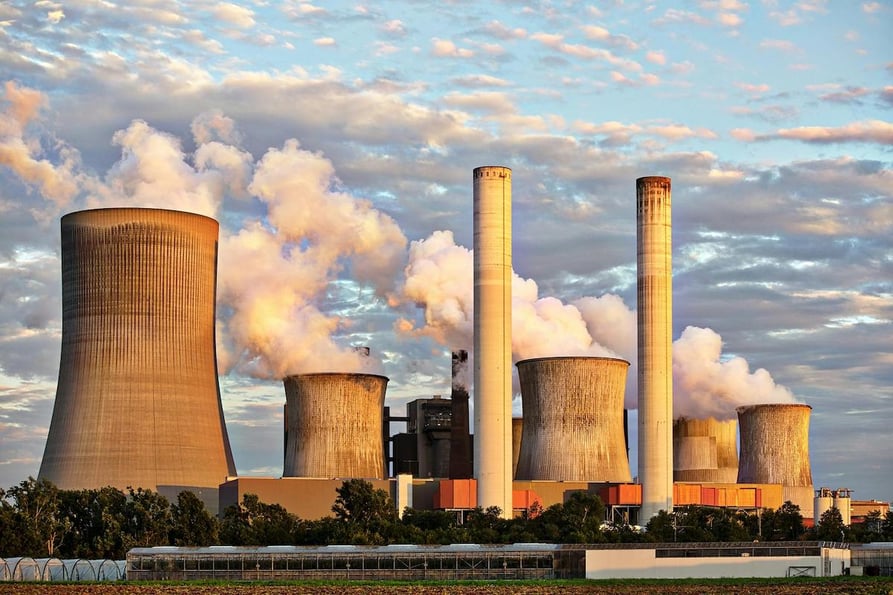The recent global energy price shocks impacted multiple sectors across our economy, directly and indirectly. In the EU alone, the spikes in gas prices caused by the war between Russia and Ukraine reduced industrial production by 2% between September 2021 and 2022.
Even with more stable prices today, the tendency is that volatility of energy prices is here to stay for a longer period. The first driver behind this trend is the impact of more renewable energy connected to the grid. While crucial for a sustainable future, the rapid integration of intermittent energy sources like solar and wind power introduces an element of unpredictability for when energy generation will be available that traditional fossil fuel-based systems did not have to deal with.
A second driver of these energy shocks lies in geopolitical conflicts and tensions that further compound the uncertainty and increase the pressure on energy markets. Disruptions in supply chains, trade disputes, and political instability have the potential to ripple through global energy networks, causing sudden price fluctuations and disrupting the balance of supply and demand.
Extreme energy price events impact not only those energy-intensive industries like aviation, chemical, metal processing, or cement and concrete. Even industries where energy is not a core input of their production or service provision suffer from cost increases in their supply chain. Food & beverages, travel agencies, and rubber & plastic products are great examples of the negative impact on their procurement costs from very energy-intensive sectors.

An alternative for companies, especially manufacturers, to protect their operations from these spikes is to step up their basic energy monitoring capabilities into a data-driven energy management strategy. On the back of Industry 4.0 and the digital transformation of equipment and processes, companies have the possibility to leverage multiple internal data sources and enrich them with external information like weather data to go beyond only understanding their energy consumption. And this can transform how they consume, procure energy, and manage their production processes. Three macro maturity stages allow all companies to step up their energy behaviour through a data-driven strategy, either starting with their consumption optimisation or integrating advanced energy procurement and flexibility with their operations. Let’s see how these three areas impact companies’ efficiency:
1. Energy Consumption
In the era of Industry 4.0, manufacturers are presented with an opportunity to transform how they consume energy, extrapolating the limitations of mere monitoring and embracing a data-driven approach to energy optimization. As sensors and connected devices expand across the factory floor, a significant amount of real-time data becomes available, shedding light on energy consumption patterns at a granular level.By harnessing this surge of data and integrating it with advanced analytics and machine learning techniques, manufacturers can understand their energy footprint deeply, enabling them to identify inefficiencies, fine-tune processes, and optimize energy utilization across every aspect of their operations. The number of ROI-impactful use cases enabled by this fresh knowledge goes from classic predictive maintenance strategies that minimize energy-intensive equipment downtime to AI-powered process optimization that adjusts parameters dynamically based on real-time data. The possibilities for energy consumption transformation are extensive and directly related to companies' sustainability targets when considering power grid emission factors.
2. Energy Procurement
Gone are the days when energy procurement was an annual task, a passive exercise of locking in fixed contracts with utilities. In today's volatile energy landscape, organizations are increasingly embracing an active, data-driven approach to energy trading, empowering them to navigate the market's uncertainties and implement more precise cost monitoring of their production. With a clearer understanding of their energy consumption, energy cost control can come from two strategies or a mix of both: building generation assets and/or implementing more robust energy price hedging strategies.
By building their own renewable generation portfolios, these organizations are breaking free from the constraints of traditional energy procurement models. Asset ownership allows long-term visibility of both price and energy generation, especially when distributed across multiple sites, with the possibility of sizing the asset optimally to factory demand. Alternatively, they may choose to employ advanced hedging strategies, utilizing sophisticated analytics to anticipate market fluctuations and execute trades that mitigate risk and optimize costs.
At the heart of these strategies lies a deep commitment to data-driven decision-making, where historical consumption patterns, real-time market data, and predictive models converge to inform every energy procurement decision. In this new paradigm, organizations are no longer consumers but active participants in the energy ecosystem, shaping their futures with precision and agility.
3. Energy Flexibility
Demand-side response or production flexibility is the last and more advanced tool in the box of data-driven energy management. Grid operators have opened diverse flexibility markets to deal with the energy imbalance as an alternative to expensive infrastructure or pollutant fossil-fuel solutions. For more mature industries, these markets are an opportunity to diversify their revenues when implementing more flexible production planning. By integrating multiple software platforms and data sources, these organizations can effectively adjust their production schedules in response to real-time energy signals, capitalizing on favorable pricing periods and alleviating strain on the grid during times of peak demand or excess of energy supply.
This data-driven approach to demand response involves seamlessly integrating production planning systems with energy management platforms, enabling organizations to dynamically adjust their operations based on a real-time understanding of energy costs, grid conditions, and market signals. Through sophisticated algorithms and predictive models, they can anticipate periods of high demand and proactively shift their energy-intensive processes, reducing their exposure to peak pricing while simultaneously providing valuable grid balancing services. This diversification of revenue sources, coupled with optimized energy consumption, represents a win-win scenario for organizations committed to smart energy management.
Conclusion
These examples showcase the power of data-driven energy management, where organizations harness the insights hidden within their data to make smarter, more informed decisions. By embracing advanced analytics and AI, they can navigate the uncertainties of the energy landscape more confidently, optimizing their operations, reducing costs, and contributing to a more sustainable future.




